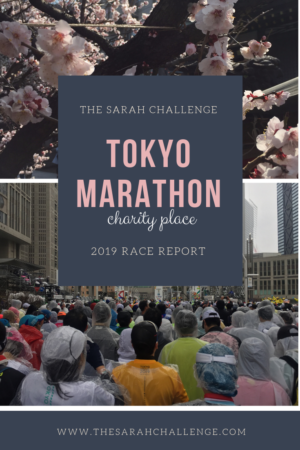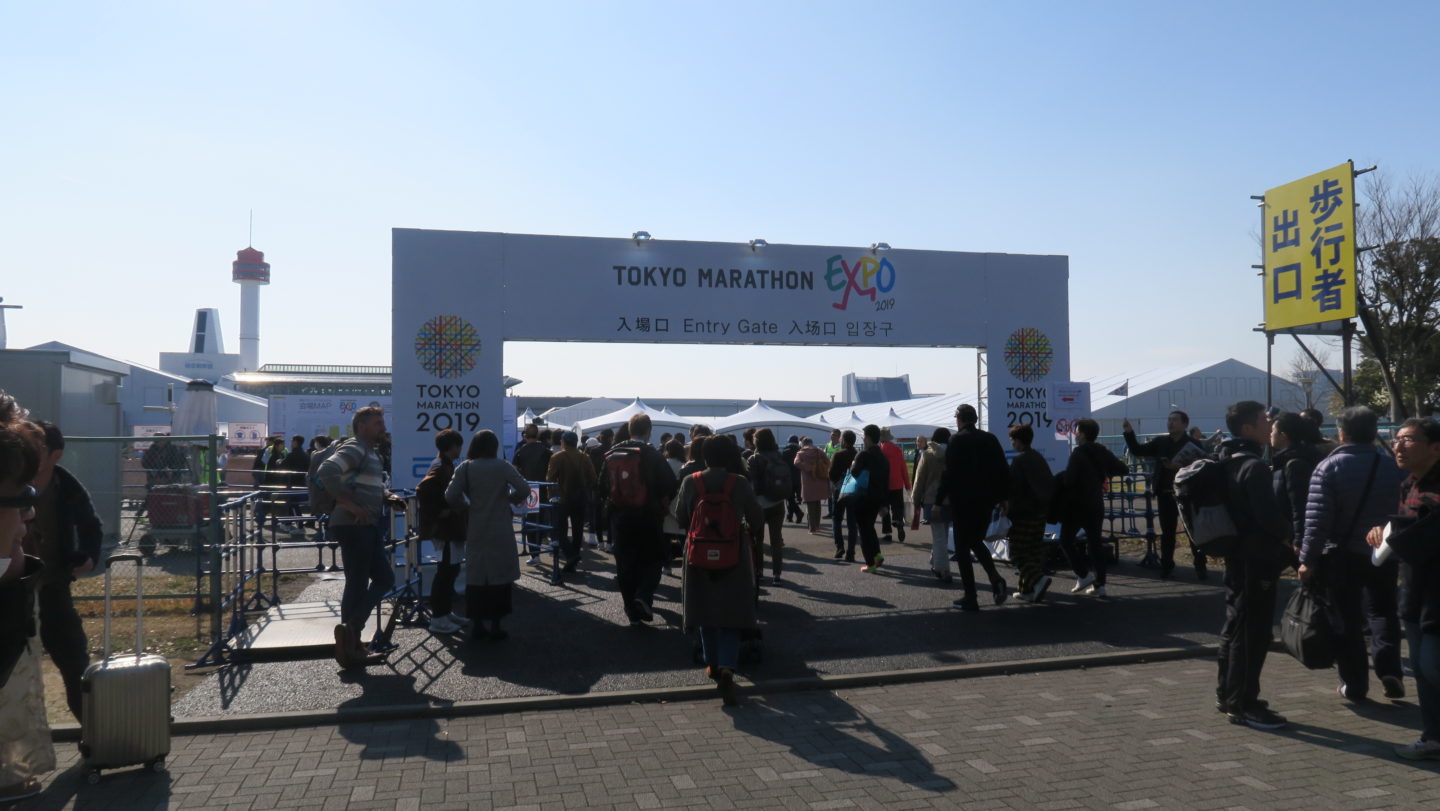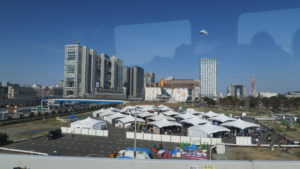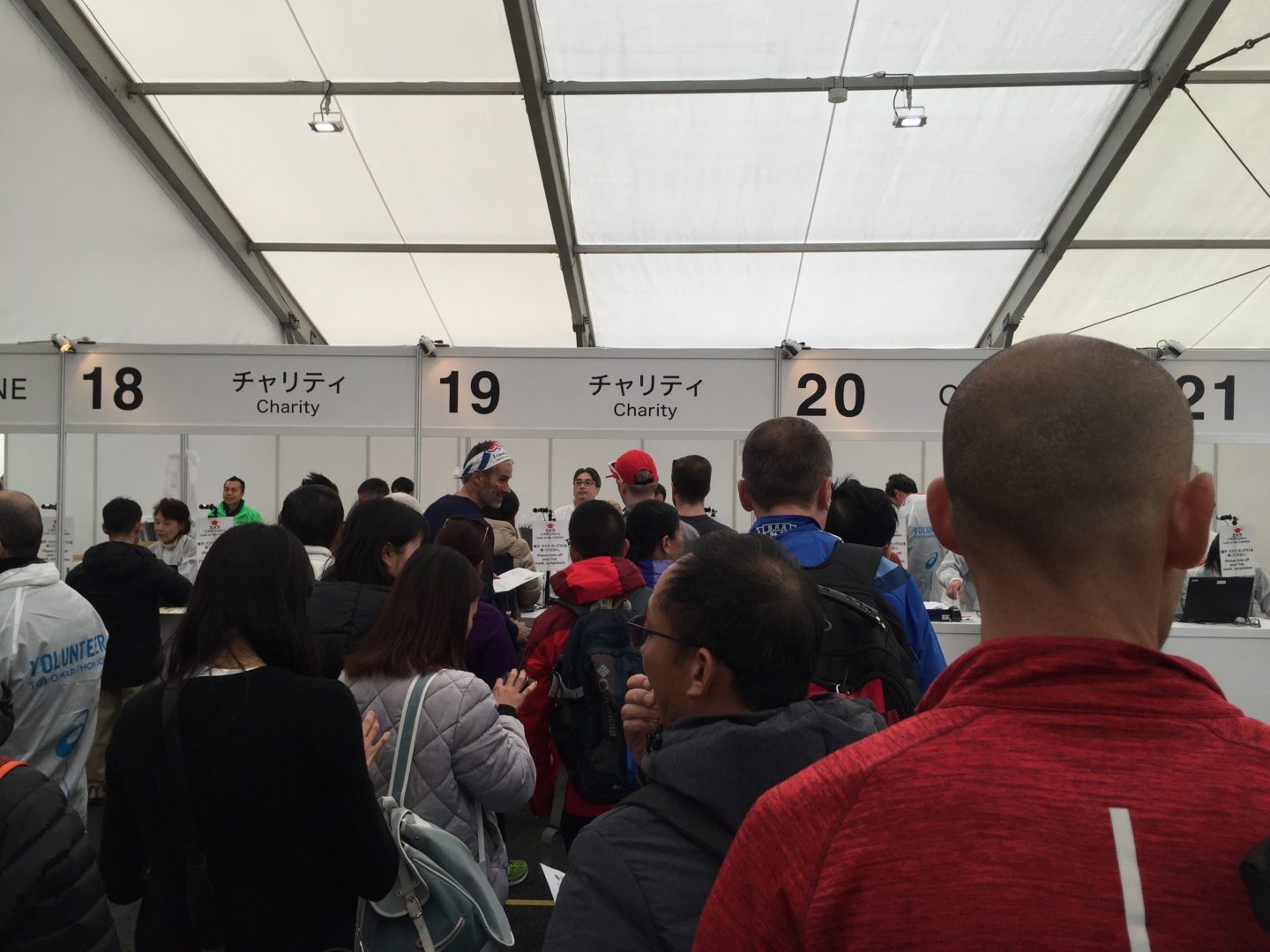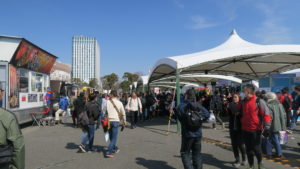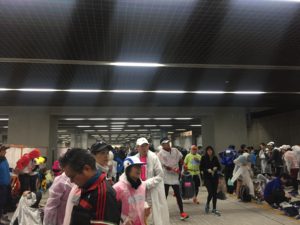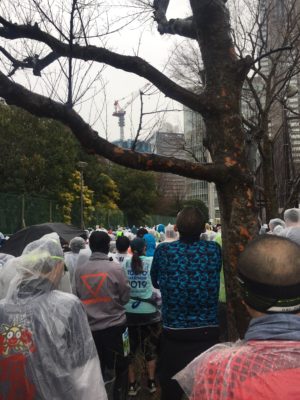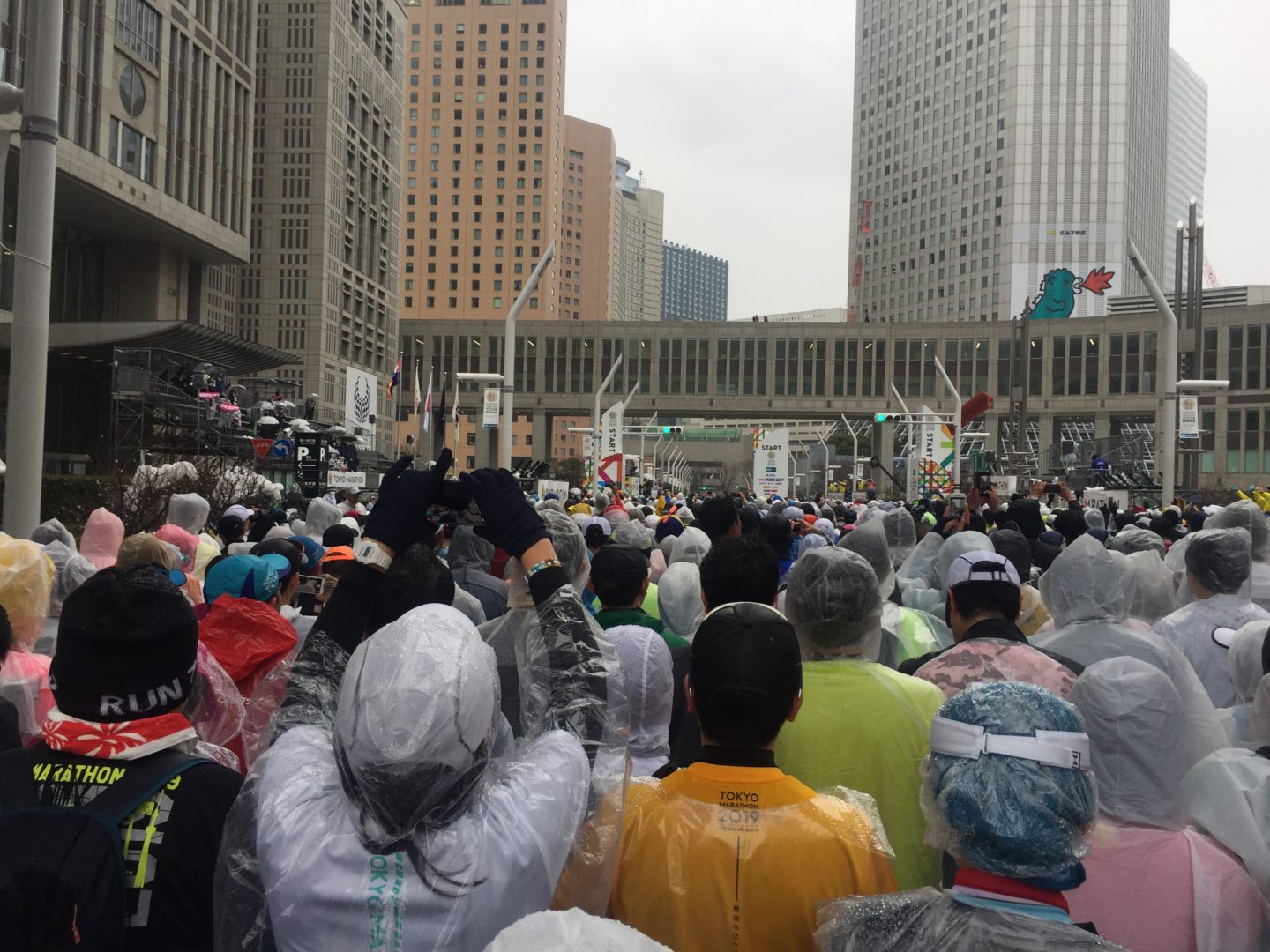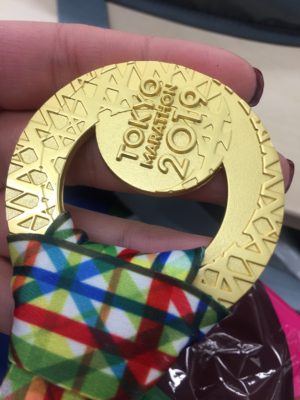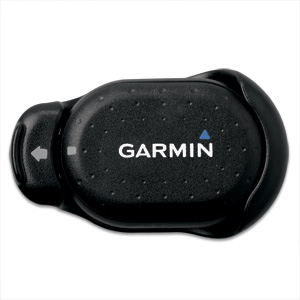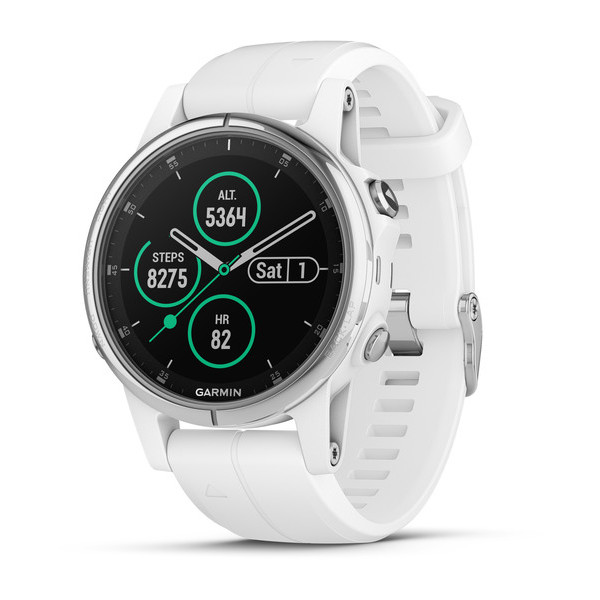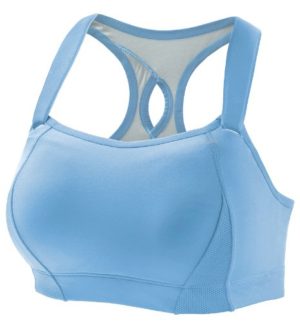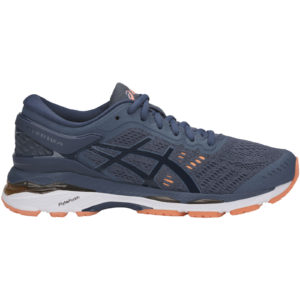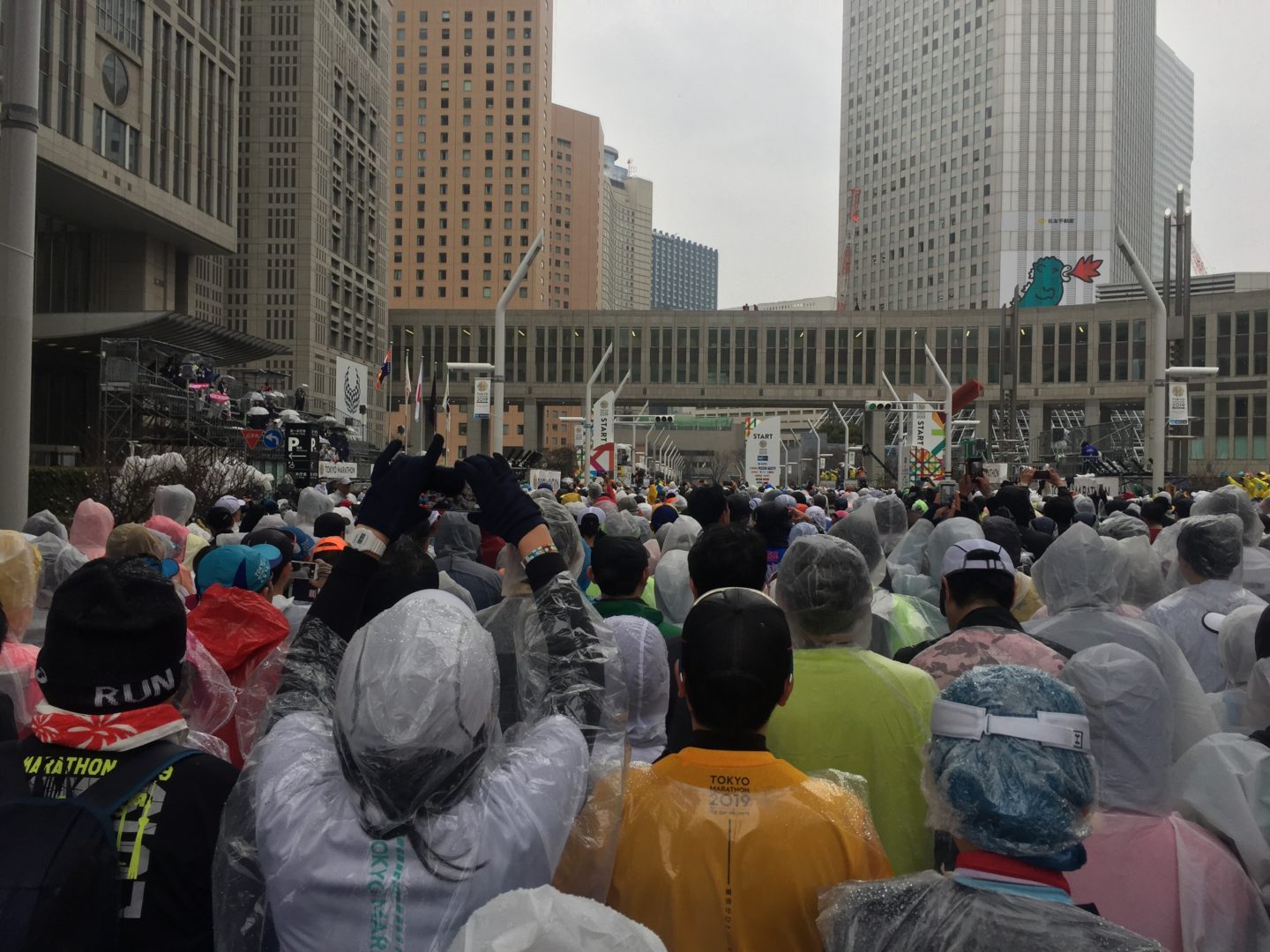
This is my race report for the 2019 Tokyo Marathon.
Race information
- What? Tokyo Marathon
- When? 3 March 2019
- How far? 26.2 miles
- Weather? 5.7C (42.3F), constant rain
- Where? Tokyo, Japan
- Website: http://www.tokyomarathon.tokyo/
Goals
| Goal | Description | Completed? |
| A | Beat 2018 NYC Marathon time | Yes |
| B | Make all checkpoints | Yes |
| C | Finish | Yes |
Road to the Tokyo Marathon
My road to the Tokyo Marathon was years in the making.
I’ve not been shy talking about my quest to complete all six World Marathon Majors (especially on my Twitter @sarahrunslondon) and it’s one of the challenges I write about on this blog. I miraculously finished the 2018 New York City Marathon in November following a persistent injury and had planned to run Tokyo since August.
Mini-update on my Abbott World Marathon Major progress
✅ Chicago
✅ London
✅ Berlin
✅ New York
🚫 Tokyo
🚫 Boston
I needed to just finish Tokyo and Boston.
Ever since I first learned about the Abbott World Marathon Majors, I wanted to earn my six star finisher medal at Boston. Boston is the holy grail to my Indiana Jones and the Last Crusade.
My real-life marathon McGuffin.
So I had entered the Tokyo Marathon lottery for years in hopes that Lady Luck would help me with my entry; after all, you can’t win if you don’t enter.
Historically, Tokyo is one of the hardest races to win a place in the lottery. So, after years of no inroads with the lottery, I wanted to make Tokyo happen.
That meant looking at other routes into the race, like charity.
Charity place
The Tokyo Marathon charity programme operates differently than the other world major charity runner programmes, where you pledge to raise money for the charity and they allocate spots based on those pledges.
For the charity programmes I’m used to, once your application is accepted, your marathon bib is guaranteed and you have several months to raise donations.
This is not how the Tokyo Marathon charity programme works. In order to secure a place in the Tokyo Marathon, you must:
- apply as a charity runner to your chosen Tokyo Marathon charity during the open window (note: application alone DOES NOT guarantee you a place)
- as soon as you raise 100,000 Yen you will then secure a charity place (so guaranteed charity spots are first come, “first raise 100,000 Yen”)
- you can immediately email friends and family to start fundraising
- you can “self-fund” the 100,000 Yen
- if you choose this route, you go to your charity page that was just set up and select “donate individually”
- as soon as you raise 100,000 Yen, you need to pay your race entry fee
- once the 12,800 Yen entry fee is paid, you will receive email confirmation of your marathon place
NOW you have a guaranteed charity race bib.
Minimum sponsorships/costs for a Tokyo Marathon Charity place:
- Charity: 100,000 Yen (roughly 700 GBP or 910 USD)
- Entry: 12,800 Yen for overseas runners (roughly 90 GBP or 115 USD)
One downside I see with raising money first before being allocated your spot is that you may sign up for the charity fundraising, raise the money, and the spots could be full up – there’s no way to know how fast the spots are being allocated!
I luckily didn’t run into this issue.
Advertisement
Charity supported: Family House
The Tokyo Marathon charity programme is called Run with Heart and 2019’s race saw an increase in charity partners and therefore an increase in individual charity runners. There were many good causes to choose from when selecting a charity to apply to and for which to raise money.
I supported Family House, a charity that provides residential facilities and care for children fighting critical illness and their families during medical treatments.
Personally, Family House’s mission struck a chord with me. I ran the 2016 London Marathon and raised money for Children with Cancer UK. In past years, I regularly donated my hair to Locks of Love and Princess Trust which helped children undergoing treatment that caused them to lose their hair.
Family House was a great fit for me and I was so honoured to run for this great cause in the 2019 Tokyo Marathon.
Hotel & Expo
I flew from London into Tokyo Haneda Airport on 1 March, two days before the marathon. I like to chill out before a non-local race and explore the city after the marathon is over.
I landed on Friday late afternoon and tried to acclimatise to the timezone by going to sleep early. I planned Saturday for the Expo. In retrospect, this strategy worked well for me.
Booking.comThe trip to the Expo was easy; my hotel was near Nishishinjuku Gochome station and was close to the start line, an important thing for me after my NYC Marathon experience in November.
When I arrived at the Expo, it was…unexpectedly outdoors. They had huge white event tents to house the bib pickup process and exhibitors. The Expo opened at 10am and was already PACKED when I arrived around 11am; there was a Disney-esque ride queue to begin the bib pickup process. (I think this was because of the Tokyo Family run, which ended around 10:45am. D’oh.)
The bib pick up process went smoothly despite the line; the Safe & Secure wrist band was the first stop, then picked up my bib (where they took my picture and scanned my wrist band), the race T-shirt, and then found my charity’s stall where I received the charity T-shirt.
The charity t-shirt is hot pink and the same across all charity entities. An unexpected bonus: my corral happened to match the pink exactly.
My favourite part of the expo was meeting my charity’s representatives; they were so gracious and excited to meet me. It really put a human touch on the charity experience as it had been, up until that point, a long distance email/mail relationship.
The official sponsor and gear tent, run by Asics, was PACKED; however, that doesn’t really do the experience justice. I am used to the World Majors gear rush, which are always busy, but this was on a whole other level.
I can only describe it as 20 pounds of people stuffed into a 10 pound tent. It was hard to move, the sizes were completely picked over, and I was beyond thrilled to move on.
The rest of the tents were just as packed with many, many bottlenecks along the designated flow, making it difficult to stop to explore anything.
Aside from meeting my charity volunteers, my other favourite part of the Expo were the food trucks; they had a food intermission between the official tents and the seller tents, with 10-15 trucks and an entertainment stage.
It was lunchtime by this point, so I opted for a curry noodle bowl, which was delicious (though the camera around my neck ended up dunked in a fair amount of curry sauce by accident. My expression of frozen abject horror was hilarious in any language).
One thing I (stupidly) didn’t count on was the lack of presence by Clif or sellers who sold European or North American energy aides; I had planned to pick my energy aides at the Expo, expecting a New York or Chicago-size expo, which was a big mistake. There were not a lot of vendors who sold energy aides (maybe 3?), and, in reality, not a lot of vendors at all.
In the end, I bought Japanese Powerade gels.
Pre-race
My hotel was a 15 minute walk to the start and planned to get there by 7:45am. It had already started raining when I woke up at 6:15am to eat my usual banana and yogurt, although the weather reports in the lead up to race day said it would start after 10am.
The start was organised but busy; my gate was well-marked, with lots of volunteers to help you get to where you’re going. My gate, Gate 3, led to an underground area of the Tokyo government building; the security check was quick and thorough. Being underground was very welcome, as I was shielded from the rain, and the area was understandably lined with runners.
I wanted to get the necessary pre-race portaloo visit over with, so I hopped in what I thought was a shortish line under an overpass. This turned out not to be a short line. It ran serpentine-like, mostly under the overpass, but sometimes exposed to the elements.
I wrapped my old 2016 Berlin Marathon plastic finisher wrap around me to keep dry and warm. I waited close to 30 minutes, but no closer to the front. When it started to get too close to the 8:15am baggage cut-off, I begrudgingly left the line.
I then went to my corral, which was around the nearby park’s tennis courts; the only way to get to Corral K was a single stairwell. As you can imagine, this created a bottleneck of runners trying to enter before the 8:45am corral cut-off. I barely made it by 8:45am and it felt as if half the corral was in line behind me.
It then became a waiting game in the rain.
I thought about my race strategy, going through the cut-off times I memorised.
A BMW dealership across the street several floors up had three men dancing in the windows. The sounds of a men’s choir filled the air. Some rock music. And then an announcer’s voice and the start cannon reverberated around me.
My corral started moving around 9:20am, 10 minutes after the confetti cannon, and we soon entered the main street toward the starting line. I crossed the start line around 9:30am, around 20 minutes after the gun.
Miles 1 to 6
I dodged a few inconsiderate people who stopped to take a picture literallyon the start line.
I started slow but steady, keeping my plastic wrap around me for the first three miles or so, making sure I warmed up before I tossed it.
The streets were wide and, though crowded, I felt like I had enough room to run.
Volunteers were evenly spaced on the side of the course with plastic bags to collect rain ponchos and clothing donations to keep other runners from tripping. In fact, this was the neatest and tidiest marathon course I have run. Ever.
The first 5 miles I ran a steady 13 minute pace, knowing I had to make the checkpoints. The first major check point was the 5.6km mark, which closed by 10:30am.
I kept an eye out for portaloos, but the lines were too long; I knew if I stopped at this point, because of the strict cutoff checkpoints, it would be the end of my Tokyo Marathon.
I made the cutoff.
9.9km cutoff (approx. 6.2 miles)
The next big cutoff was the 9.9km mark at 11am.
A miracle of miracles, I managed to find a bathroom at about 7 miles in with virtually with no line; I was back on the course in less than 2 minutes.
After the first checkpoint, this was my first encounter with the Finish Support Runners, who had cube-shaped gold balloons tied to their hats. The gold balloons had Japanese on them and the only English were race signs pinned to their backs, which said Finish Support Runners.
At first glance it may be easy to think they were four costumed runners (of which there were hardly any), but they were not.
I confirmed their purpose by speaking briefly with one of the Finish Support Runners; he said “In front, okay. Behind, no.”
Ah. “Finish Support Runners” was the Japanese way to say “Cutoff pacers.”
I picked up my pace a bit to make sure I was ahead of them. I could see the faster runners on the out and back part of the course, running on the opposite side of the streets.
I reached the checkpoint ahead of the cutoff time and ran to the course turnaround.
Each checkpoint was clearly marked with a huge sign with its distance and time limit; there was also a huge Seiko digital clock with the current time.
A few minutes later, now running past the cutoff point on the other side of the street, I saw officials taking runners off the course.
I had just been there. That was a little too close for comfort.
Advertisement
Miles 7 to 18
The course is flat and fast, with the only slight incline being small bridges or overpasses.
I continued to run steadily after the checkpoint, keeping a close eye on my pace.
This part of the race mentally taxed me; a lot of the course was out and back on different sides of the same road. Seeing the other side of the course, which you knew you would run in the future, creates a never-ending sea of runners. It was a stunning sight I’ll not soon forget.
But with no visual for the turnaround point, it took me some mental toughness to ward off demotivation.
I doubled down my resolve. I took a gel every hour and felt strong, well-paced and kept an eye out for the return of the Finish Support Runners.
The volunteers and aide stations were at every 5k, well-organised and the sets of volunteers who had already collapsed their tables cheered and encouraged high fives. I high-fived at every aide station and couldn’t help but smile every time.
It was, without a doubt, an amazing experience to run through Tokyo, but I will always remember the people, the volunteers, who smiled even though they were just as much in the rain and cold as I was.
30km cutoff (approximately 18.7 miles)
About two mile before the 30km cutoff point, I had to stop again to use the portaloo. This stop had no line and I was back on the course in a matter of minutes.
I started running again, getting back in my pace zone, when I saw them again: the Finish Support Runners.
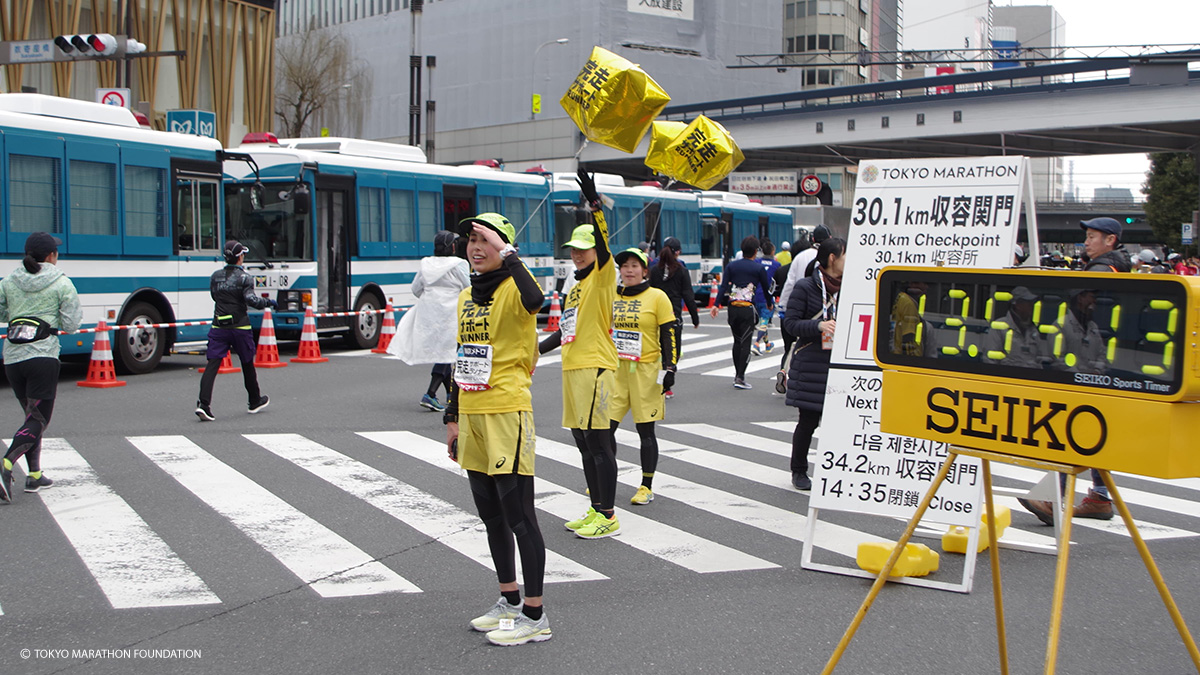
They seemingly came out of nowhere; before I stopped I couldn’t see them behind me.
I increased my pace to 12 minute miles at this point, knowing I had to keep up with them. About two miles later, I had fallen about 100m behind them but I kept them in sight. I knew I had to fight for the right to continue the marathon.
This was do or die.
I dug deep and I saw the checkpoint coming up. My heart almost stopped when the Finish Support Runners crossed the checkpoint and stopped to cheer runners through.
I saw the Seiko clock and the checkpoint sign.
The Finish Support Runners reached the checkpoint point 2 minutes before the cutoff time.
I safely passed with a minute and 30 seconds to spare.
Miles 19 to 26.2
After the checkpoint, I dropped back to my 13 minute pace again. The checkpoints loosened. I didn’t see the Finish Support Runners for the rest of the race and resolved to continue my pace so I wouldn’t have to.
My legs felt strong, but my left knee started to tweak like it did during the NYC Marathon.
Like most World Majors, spectators lined the course and offered runners water, chocolates, candy, and even gels. The aide stations with food or energy gels were out by the time I ran through them, so a saint spectator offered a gel when I needed it the most.
Quite a few spectators also offered quick spritz from aerosols that helped cool muscles, called Air Salonpas Jet, which helped immediately with my tweaking knee. There was an official Air Salonpas Jet station later on the course, but I luckily didn’t need it then.
The last leg of the race was easier for me than the first; I counted down the miles and kms.
Just a park run. Just the last mile. Just the last km in a park run.
And there it was. The finish line.
That last stretch was so bittersweet, knowing it was hard-fought to be there, but also because I had wanted this race, wanted this medal for so long. To be in Japan, to support Family House, to make all the cut-offs, to finish the Tokyo Marathon.
I did it.
I earned my Tokyo Marathon medal and my fifth World Marathon Major star.
Post-race
When I finished, it was still raining and I started to feel wet and cold – I just wanted to get warm and dry.
It seemed about 10-15 minutes before I reached the towel and the foil stations. By then, my teeth were chattering, my hands tingling with cold.
Though it was well-organised, post-race logistics need the foil and the towel to be MUCH earlier in the finisher’s shoot, perhaps even before the runners break off by bib colour – and especially considering the day’s cold, wet conditions.
The finisher’s bag was a bottle of Pocari Sweat, water, and a Japanese peanut butter sandwich. (I later saw pictures of a smiling banana, but they must have run out by the time I finished.)
As I neared the end of the shoot, a volunteer noticed I was shivering despite the foil and offered to get my bag for me. This small act of kindness was so very appreciated, especially as it turned out my baggage was on the last cart of the shoot!
The charity changing room was inside an office building, the halls of which were lined with paper to protect the flooring from our wet runners’ shoes. The changing rooms were large, open conference rooms and the women’s was busy; I found a spot to sit while I tried to warm up.
There were warm towelettes on offer and I felt human again once I changed into dry clothes, slipped on my flip-flops, and helped myself to a warm (Japanese) cuppa and peanut butter sandwich.
What’s next?
2019 Chicago Marathon. I am aiming to be a legacy finisher (five times in ten years).
When will I run Boston to earn my six star finisher medal? Hopefully 2020.
Would I go back and run Tokyo again? In a heartbeat. What a great race and, despite the rain and cold, it was a great experience to run for Family House.
Credit: This post layout was generated using the new race reportr, a tool built by reddit user /u/BBQLays for making organised, easy-to-read, and beautiful race reports. I adapted it to html for this blog post.
